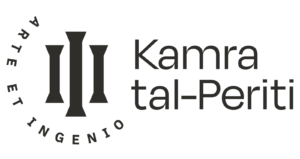International Scientific Conference | Conversions and Reconversions of Sacred Architecture and Art
3rd International Scientific Conference
ARCHITECTURE OF LOCAL
CULTURES OF THE BORDERLAND
The Sacred – The Profane – The Sacred
Conversions and Reconversions of Sacred Architecture and Art
XX – XXI cc.
Sacral buildings changed purpose of use dilemma has been issued in the history for ages. It is also relevant today but now it appears in a more massive scale and it is still growing in its intensity.
Formerly it was the consequence of an ideological, political, military, national, social and ethnic struggle. It testified about exclusiveness of various religions. It was the result of religious activities and often a struggle with religion, different mission actions, proselytism and even religious wars. These were not sporadic cases. They were preceded by acts of permanent and continuous intolerance, ignorance and sometimes aggression. Today, more often it is the result of progressive secularization of life in the world and the depreciation of the religion as a source of value creation in human life and a testimony of his cultural heritage. Culture departs from worship, from which it is derived. It becomes alienated.
The objects of worship of one religion are not only converted into objects of different religions. Today they cease to be objects of worship at all. Regardless of the causes of such incidents and their ethical overtones, it becomes a global spreading phenomenon.
It is increasingly common that abandoned or economically inefficient temples are adapted to hotels, restaurants, apartments, shops, and even workshops, garages and entertainment places with services of a dubious reputation (brothels) and even public toilets. Today they are transformed into sophisticated phantoms, without a religious spirit larvae-mask. To this day they stand sometimes abandoned, ruined, desecrated. They cry for mercy.
Complete conversion of the sacral role of the object into a secular or even profane one, is a dangerous phenomenon as it affects the essence of culture, threatens its fundamental values, which have always been represented by it: truth, goodness and beauty.
So maybe conversions of temples, even though they seem to be morally “dubious”, in a broader perspective are necessary? If it saves them from a fall, annihilation and desecration? Especially since they may also be a pretext for mutual understanding and approchement of the Churches and their religions, their encounter and dialogue. Hopefully this dialogue will not last forever and may this meeting be that postulated by all “meeting in truth and love.”
research problems:
- Analysis of cases of destruction or devastation of buildings of worship,
their profanation and desacralization; aggressive or passive, when their status
is changed from the sacred to the secular one; - Analysis of the occurence of conversion and reconversion in sacred
architecture and art; - Elaboration of ideological assumptions and methodology, in terms of
adaptation of sacral architecture for non-invasive functions, with a respect
for its cult status.
aim:
The main aim of the conference is to show and assess the problem of conversion and reconversion in sacred architecture and art XX-XXI cc.
The conference has both a diagnostic purpose of revealing the essence, methodology and scope of their occurrence in history and today, and above all a goal of forecasting, revealing their importance for the health of the sacred of different religions.
scientific committee of the conference:
Prof. PhD. DSc. arch. Konrad Kucza-Kuczyński – chairman
Warsaw University of Technology, vice-chairman of KAiU PAN
Prof. PhD. DSc. arch. Sławomir Gzell
Warsaw University of Technology, chairman of KAiU PAN
Prof. PhD. DSc. arch. Witold Cęckiewicz
Cracow University of Technology, honorary chairman of KAiU PAN,
a full member of PAN; a member of Polish Academy of Learning
Prof. PhD. arch. Petar Arsić
University of Belgrade
Prof. PhD. DSc. arch. Wojciech Kosiński
Cracow University of Technology, a member of KAiU PAN
Prof. PhD. arch. Yuriy I. Kryvoruchko
Lviv Polytechnic National University
Prof. PhD. DSc. arch. Ewa Kuryłowicz
Warsaw University of Technology, a member of KAiU PAN
Prof. PhD. DSc. Jerzy Malinowski
Nicolaus Copernicus University in Toruń, chairman of PISnSS
Prof. BNTU PhD. DSc. arch. Valery F. Morozov
Bialystok University of Technology, Belarusian National Technical University
Prof. PhD. arch. UM dr arch. Svetislav G. Popovic
University of Montenegro
Prof. TUS PhD. arch. Yoshihiko Sano
Tokyo University of Science, Japan Institute of Architects (JIA)
Prof. PhD. DSc. arch. Jan Tajchman
Nicolaus Copernicus University in Toruń
Prof. BUT PhD. DSc. arch. Jerzy Uścinowicz
Bialystok University of Technology, a member of KAiU PAN
program board of UIA WP „Spiritual Places”:
Prof. BUT PhD, DSc. arch. Jerzy Uścinowicz – ZG SARP, director of UIA WP SP
Prof. PhD. DSc. arch. Konrad Kucza-Kuczyński – a member of UIA WP SP
MSc. arch. Mariusz Ścisło – President of ZG SARP
PhD. arch. Jerzy Grochulski – a member of UIA board
Prof. PhD. arch. Юрiй I. Криворучко – vice-director of UIA WP SP
MSc. arch. Zygmunt Knyszewski – vice-director of UIA WP SP, a member of CIAF
organizing committee:
Prof. BUT PhD, DSc. arch. Jerzy Uścinowicz – chairman
PhD. arch. Janusz Grycel – secretary
PhD. arch. Agnieszka Januszkiewicz – secretary
PhD. arch. Danuta Korolczuk
PhD. arch.. Piotr Trojniel
PhD. arch. Aleksy Łapko
MSc. arch. Magdalena Dorosz
conference office:
Zakład Architektury Kultur Lokalnych
Wydział Architektury Politechniki Białostockiej
ul. O. Sosnowskiego 11, 15-875 Białystok, Polska
conditions of participation:
The inclusion criteria for participation in the conference and the publication of the paper will be a positive opinion of the Scientific Committee and reviewers. All qualified papers and announcements will be published in the form of a monograph.
The languages of communication at all sessions of the conference are Polish, English, Russian, German and French.
form of implementation:
- plenary sessions in the Palace of SARP, at Bialystok University of Technology and at the Academy of Supraśl;
- discussion session, the so-called “roundtable”, at the Academy of Supraśl;
- summary session in the auditorium of the Academy of Supraśl;
- study session: “Sacrum of the borderland” with visiting objects of worship;
The cultural program: concert at the Monastery of the Annunciation of the Virgin Mary in Supraśl and drama performance at Wierszalin Theatre in Supraśl.
dates:
- The conference will be held on 21-23 April, 2017;
- The deadline for sending the registration card expires on 26 March, 2017;
- Confirmation that the conference fee has been paid should be sent by 3 April, 2017;
- The deadline for sending paper abstracts (by email) expires on 3 April, 2017;
- The deadline for sending full papers together with illustrative material expires on 1 July, 2017.
costs:
The cost of participation in the conference is 500 PLN per person (120 €) and includes:
- participation in all sessions of the conference;
- meals (2 lunches, 2 dinners);
- the cost of travel on the route Bialystok-Supraśl-Białystok and participation in cultural events;
- publication of the paper.
The cost of accommodation in Supraśl is expected to be approximately 150 PLN. It should be covered individually by participants. The organizer provides booking accommodations as reported in the registration card.



